
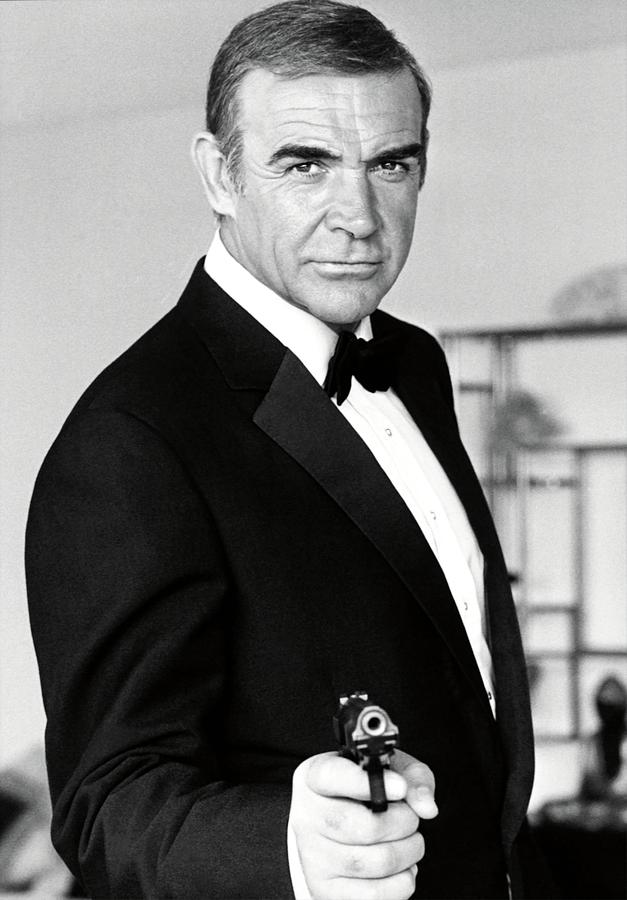
The timeline behind Never Say Never Again is a tortuous one. People remember it as the ‘non-official’ Bond that competed against the official EON movie of 1983, Octopussy, but its origins go back to the early 60’s. Producer Kevin McClory and screenwriter Jack Whittingham worked with Ian Fleming to bring Bond to the big screen, writing an adventure which would come to be known as Thunderball. That permutation never came about, McClory walked away and Fleming sold the rights to EON who made Dr No and the subsequent series of movies. However the year before Dr No, Fleming decided to take the material that had been written for a screenplay, and make it into the novel “Thunderball”. McClory sued, and the matter stayed in courts for some time, with the outcome being McClory producing Thunderball for Broccoli and Salzman’s EON productions, and him agreeing not to remake the movie until 10 years had passed from Thunderballs release in 1965.
So it came about that in the latter half of the 70’s, McClory was working away at getting the movie made as a rival to Moonraker, but a backdrop of ongoing legal issues delayed the movie further. The courts agreed he had the use of the characters (meaning that EON could no longer use the character of Blofeld or SPECTRE organization), but could not write any other original story using the James Bond character.. so he was locked into remake territory. He also could not use the gunbarrel effect (opting instead for a screen full of 007’s) and was also barred from using other images and sounds associated with the EON pictures.
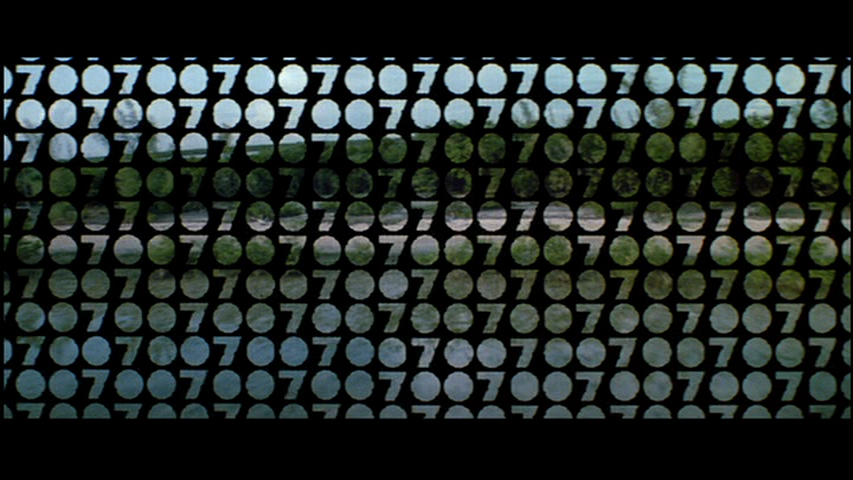
After some failed attempts to get financing ( studios and investors being wary about touching a project with such a tortuous legal history), producer Jack Schwartzman came on board and managed to get over the last few legal hurdles. After bringing Lorenzo Semple on board to write the script (Papillon, Three days of the Condor and.. the TV Batman series!), the movie, now called “Warhead” started to become reality. By the time the movie started production it underwent a name change – Connery had sworn at the end of filming Diamonds Are Forever he would never play Bond again. His wife Micheline suggested the title Never Say Never Again as a result, and the rest is history.
Over time, critics have had mixed opinions about the movie. Generally they were delighted to see Connery return, even if they acknowledged he was getting a little old for the role at 52, he was still younger than Moore. The expectation was high, this having a bigger budget and starry cast, but the consensus was that the script did not do justice to a return of Bond. In particular, the score by Michel Legrand was vilified. Legrand had form, with previous movies “The Thomas Crown Affair” (including the song “Windmills of Your Mind”), “Yentl”, and “Ice Station Zebra” amongst others, but his score here was considered anachronistic and unsuitable. In fact, the original choice for composer had been James Horner (Star Trek, Aliens, Titanic) who would doubtless have given a more traditional orchestral score rather than Legrands easy listening jazzy score. John Barry had been approached, but declined out of loyalty to Cubby Brocolli, as did Tom Mankiewisz the screenwriter, who Connery approached to polish the script.
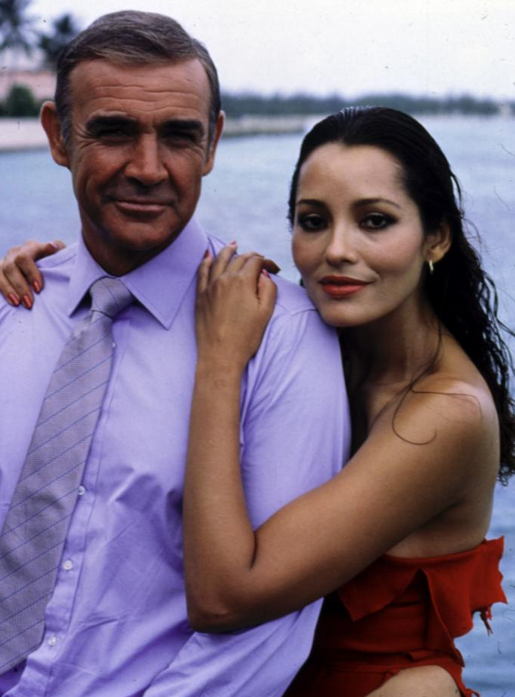
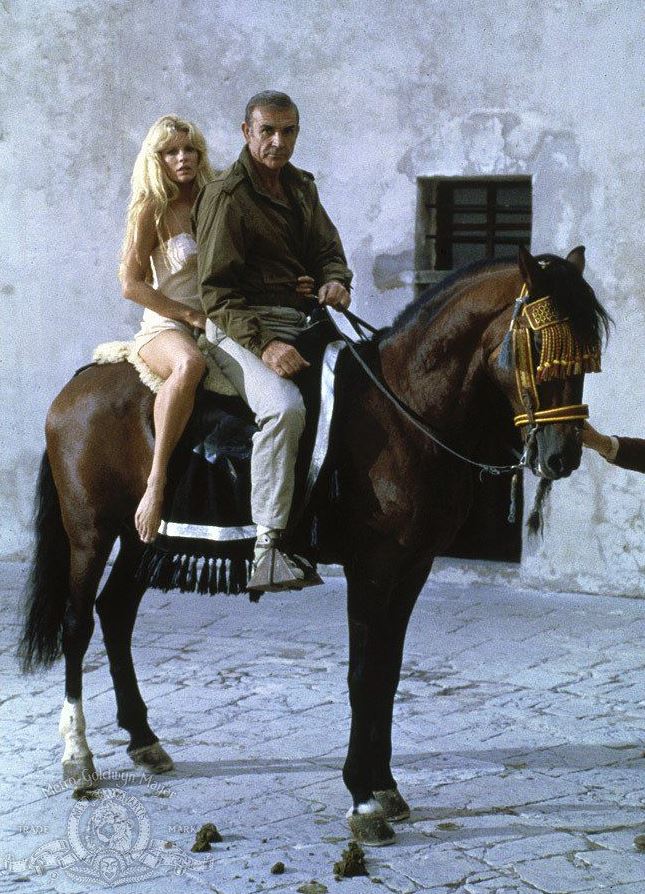
In the end, the movie sorely missed the familiar elements of Barry’s music, the barrel roll, the ensemble cast associated with Bond, but it had some moments too. The tango scene, ex Playboy pinup Barbara Carrera clearly relishing her Golden Globe nominated role, a young Kim Basinger on the cusp of fame, plus gravitas from Max von Sydov and Edward Fox. But for the moments that brought a smile, there were the misfires too – the opening scene was intended as a tense action scene, but was ruined by having the title song run over it. The computer game is dated now, but still a novel idea, and the stuntwork is perfunctory, not a patch on what was happening in the EON pictures. The director’s chair had been offered to several big name directors who had passed, including Peter Hunt, director of “On Her Majesty’s Secret Service”. Ultimately Irvin Kershner, best known for “The Empire Strikes Back” got the gig, and he brought on many of the crew from “Raiders of The Lost Ark”. Subsequent to Connery reprising the role for a substantial fee plus percentage of the profits and cast approval, the script has several references to Bond's advancing years – playing on Connery being 52 at the time of filming – and there are other aspects of age and disillusionment in the film, such as the Shrubland's porter referring to Bond's car ("they don't make them like that any more"), the new M having no use for the 00 section and Q with his reduced budget.
Filming took place in the French Riviera, Nassau, and Almiera. Largo’s lair was actually Fort Carre in Antibes. The production did not run smoothly, running over budget. The director and producer did not see eye to eye, and Sean Connery eventually stood in to de facto take over producing, with Schwartzman being reduced to funding the remainder of the movie out of his own pocket when no other investors could be found.
Touted as the Battle Of The Bonds, the movie opened 4 months after Octopussy, and did respectably well, audiences clearly keen to see the return of Connery as Bond. It did consistently less than Octopussy in all markets, though not by a great margin. Critics too at the time were favourably disposed to the film, saying it confirmed Connery as the best Bond – even when not at his best. Philip French was on the other hand less complimentary, saying that "like an hour-glass full of damp sand, the picture moves with increasing slowness as it approaches a confused climax in the Persian Gulf." Other than that, almost all critics gave it a thumbs up, with Roger Ebert proclaiming Connery’s return a minor miracle, and also appreciating the human element. As time has gone on, opinion has declined, with Rotten Tomatoes currently ranking it 16th in the entire pantheon of Bond movies.
As a post script, it is interesting to know that in the 90’s McClory proposed another remake of Thunderball. This fizzled out, and Sony then bought the rights from him intending to start their own series, since they also had the rights to Casino Royale. McClory passed away in 2006, so the chances of a rival Bond movie are now vanishingly small, particularly since MGM now own the distribution rights after purchasing them from Sony.
So is this a lesser Bond, a carbuncle on the gleaming production machine of EON, or is it a worthy addition to the canon, a return of the iconic Bond and a much loved antidote to the style of Moore’s Bond? Doubtless the truth is somewhere in between, but give it another watch and make up your own mind!
Trivia
• Rowan Atkinson's first movie. His character was a humorous supporting character called Nigel Small-Fawcett. He would later parody James Bond himself as Johnny English.
• A stunt involving a horse jumping off a cliff caused controversy among animal rights activists including the RSPCA. it subsequently became standard practice for movies to include a disclaimer (when applicable) indicating that animals were not mistreated during production.
• A young Steven Seagal was the martial arts instructor for this film. He broke Sean Connery's wrist during training.
• This movie is based on the original "Thunderball" screenplay and not the script for the released version of Thunderball. The Maximilian Largo character in Never Say Never Again was called Emilio Largo in Thunderball. In early outlines / treatments for that movie, he was known as Henrico Largo. Fatima Blush, a double agent from the original treatment, was renamed Fiona Volpe for the movie and excised completely from the book, then revived for NSNA. Domino Smith from the treatment became Domino (Dominique) Derval in Thunderball and Domino Petachi in NSNA. The Italian ship Disco Volante was Anglicised for NSNA as Flying Saucer. The Palmyra estate was relocated from the Bahamas to Morocco.
• James Bond's Bahamian romantic interlude in this movie, credited as the Lady in Bahamas, was played by Valerie Leon. She also appeared in The Spy Who Loved Me as the Hotel Receptionist at the Cala Di Volpe Hotel in Sardinia.
• MGM bought complete ownership of the movie in December of 1997 from Taliafilm Inc. for $15 million.
• Kim Basinger had never seen a Bond film when she signed on as Domino.
• When Bond arrives at the spa, he is driving a convertible Bentley. This is easily seen when the valet pulls his suitcase from the backseat and the flying B is on the hood. This is a tribute to the original Ian Fleming novels where James Bond drove a convertible Bentley, not an Aston-Martin like in the other films.
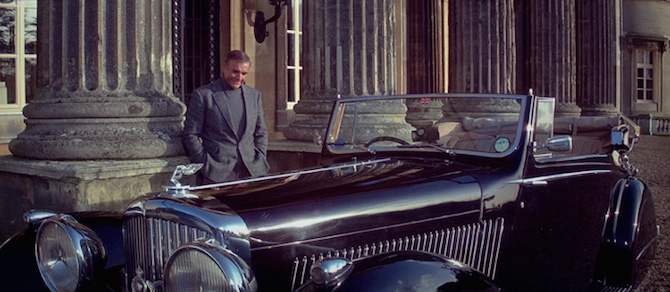
• Pat Roach: as Count Lippe, the large villain in the health clinic (equivalent of Guy Doleman's role in Thunderball). Better known to audiences in the UK as the gentle giant from “Auf Wiedersehen, Pet”, Roach is the only actor to deliver severe beatings to both James Bond and Indiana Jones, having terrorized the latter in Raiders of the Lost Ark and Indiana Jones and the Temple of Doom.
• It is rumored that Sean Connery had an alternate ending to the "wink" in mind. As the characters walk down the street, a man brushes by them, causing them to double-take and look back at him. The camera angle shifts, and we see that it is Roger Moore, who turns to look at them and says "NEVER say never again!". Roger Moore and Sean Connery were good friends, and both were willing to do it, but they were never able to convince the director and producers.
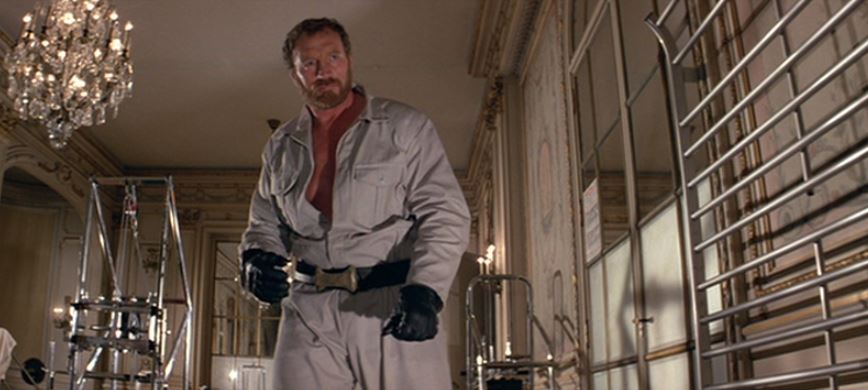
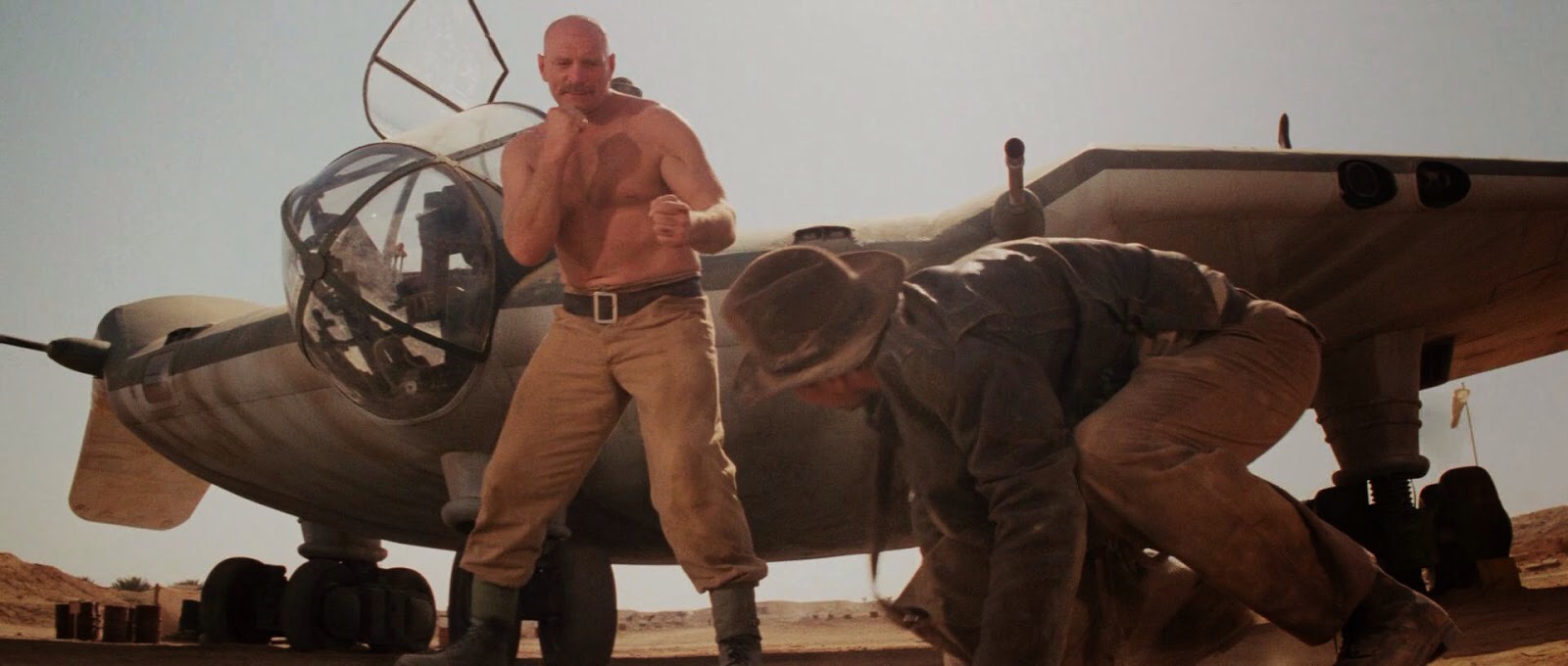
© Stephen's Movie Guide
Inverurie Website Design